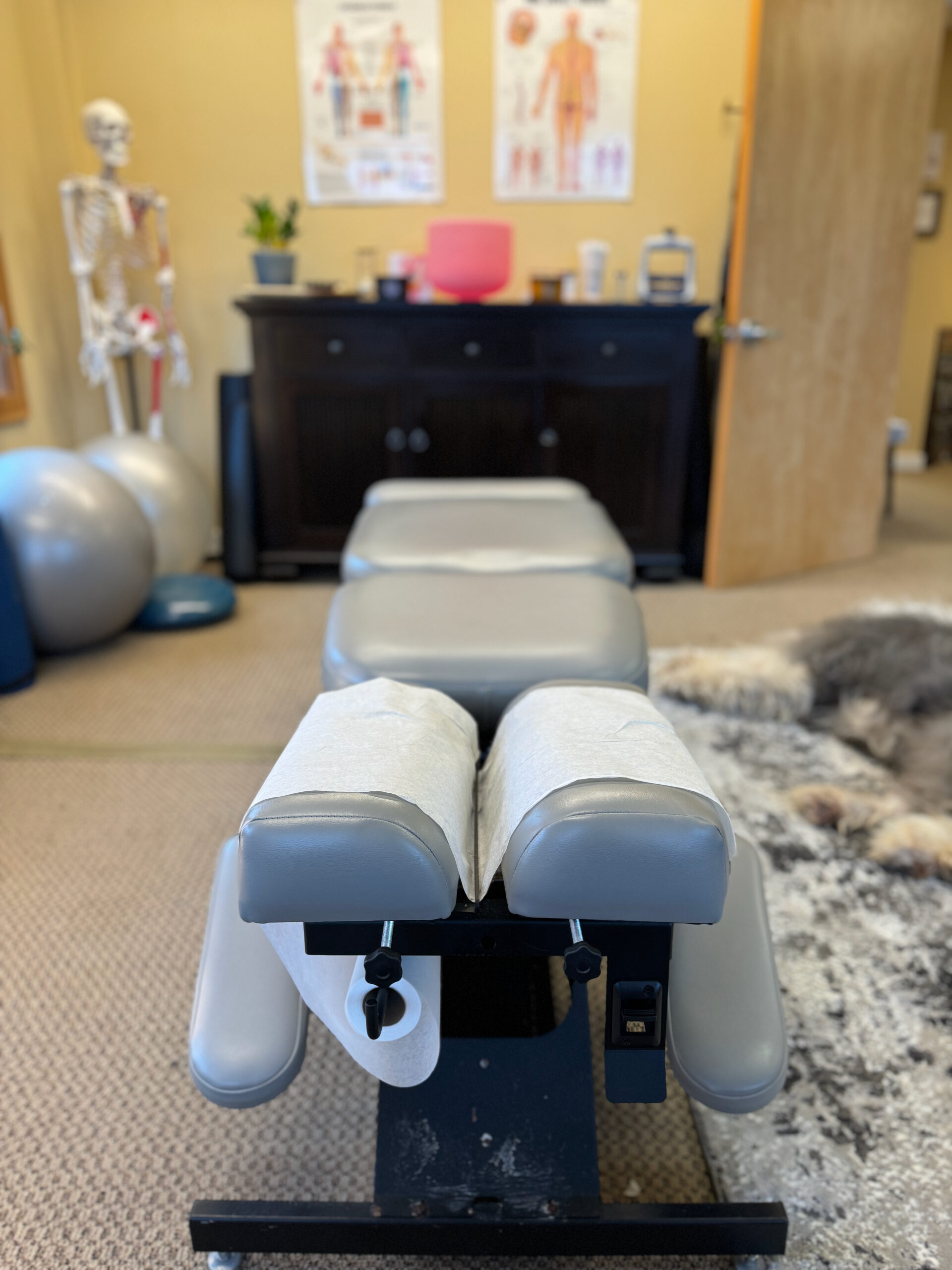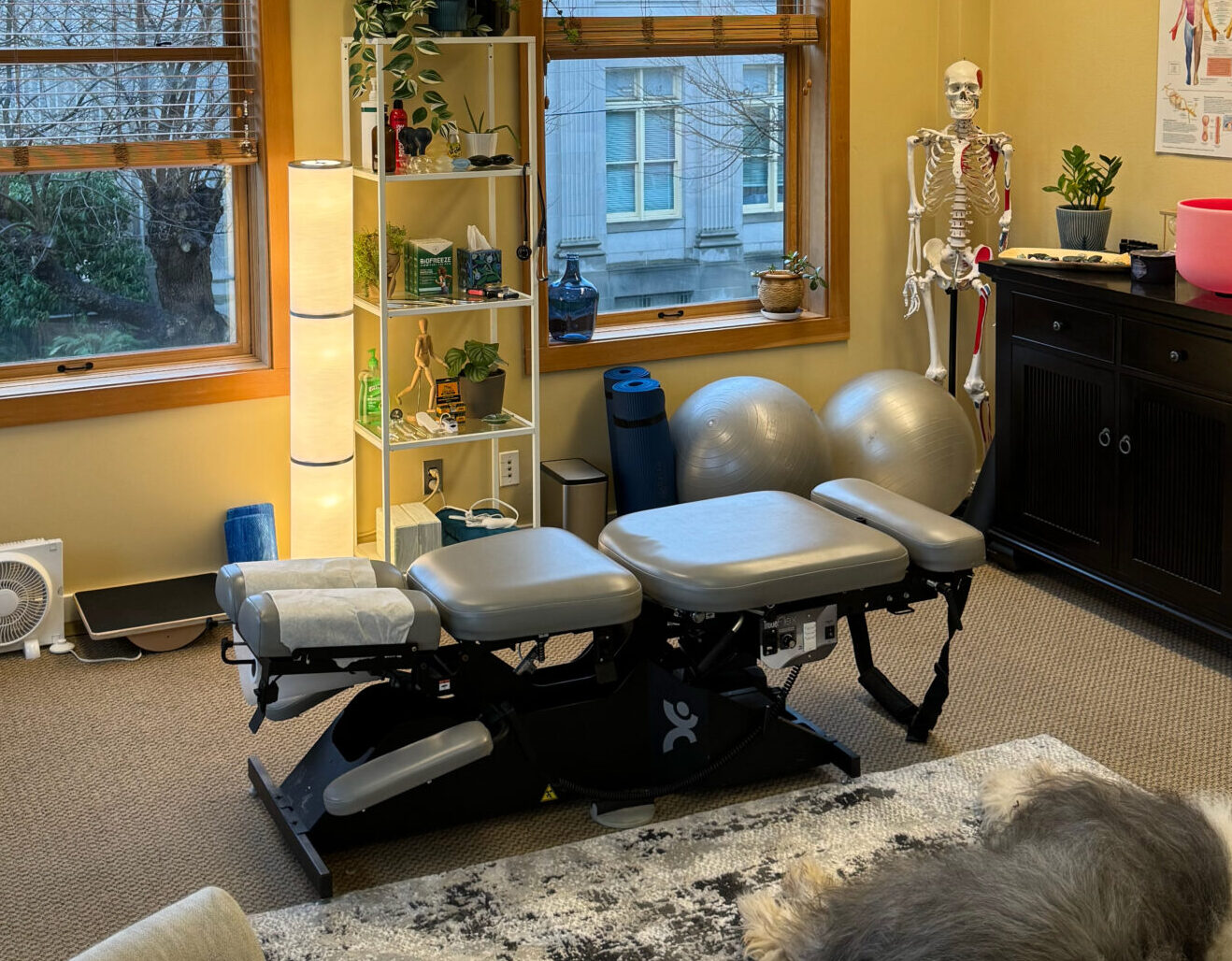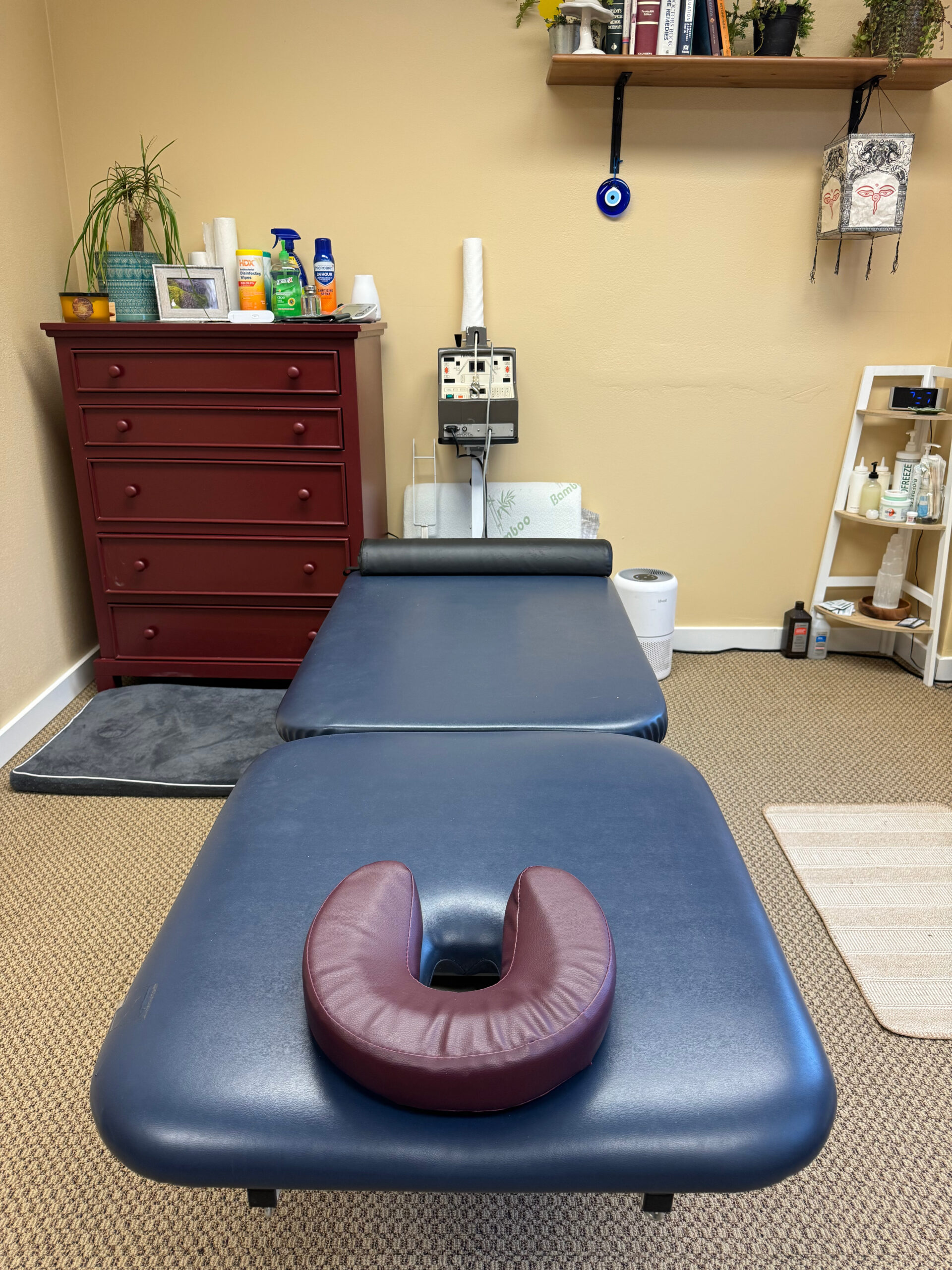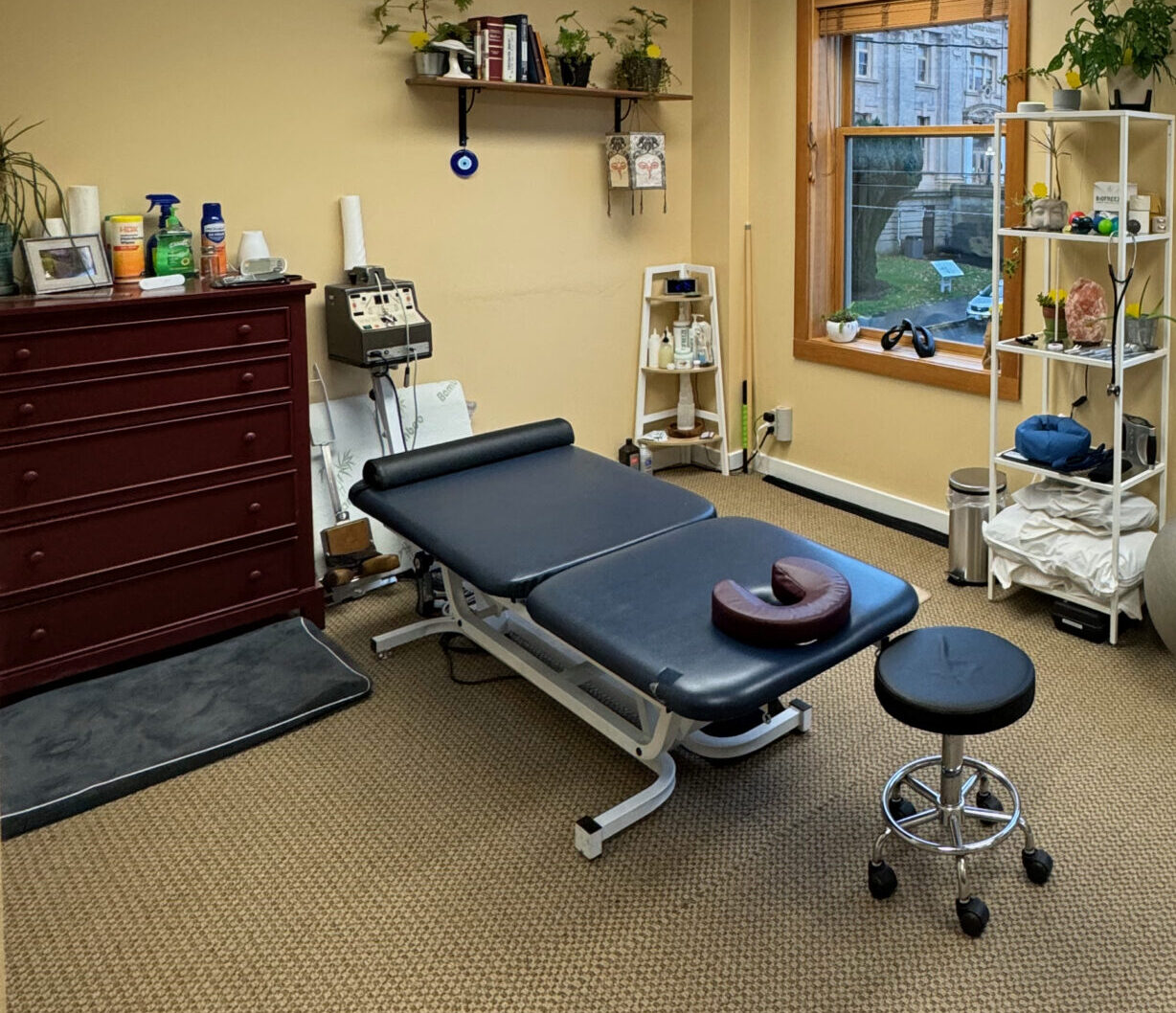Advanced Lumbar Care and Specialized Tables
At Sisu Coastal Wellness, in addition to the use of our hands to adjust the spine and soothe muscles and ligaments, we offer several unique therapies for low back conditions. Specifically we utilize two specialized chiropractic tables– a Flexion/ Distraction table and a Lumbar/ Cervical Decompression table. They are similar tables and treatments but they do have their individual benefits. Both not only function as a table for other treatment, but the tables themselves are a modality of treatment. Let’s go deeper.
A very safe, effective, gentle, and conservative approach to successfully manage disc injuries, stiffness, low back and leg pain symptoms, degenerative disc disease and spinal stenosis.
A gentle treatment often used with patients who are recovering from spinal surgery or back injury. Also an alternative to explore if spinal surgery has been recommended.
An ideal chiropractic treatment for people with arthritis, osteoporosis or of an advanced age or those who require a lighter touch.
Well suited for patients experiencing high levels of pain who feel they're unable to tolerate a more vigorous chiropractic adjustment and require a gentle approach.
Treatment movements are gentle, repetitive and slow, without any quick thrusts or undue pressure. No spinal manipulation “popping/cracking” is involved.
Well researched and are powerful first line treatment for back pain and other health conditions related to the lumbar spine.
Flexion/ Distraction Treatment table
A gentle non-invasive treatment used by Chiropractors. It is part of the ‘Cox Technique’ with a goal of decompressing the lumbar spine by decreasing disc pressure and relaxing surrounding musculature. As the decompression table stretches the spine, negative pressure is created within the spinal discs, which can result in the retraction or repositioning of the bulging disc material, leading to pain relief.

Conditions that may benefit from flexion distraction therapy include:
- lumbar disc injuries
- ruptured, bulging, herniated “slipped” or degenerated discs
- degenerative spinal conditions
- spinal stenosis (narrowing of the spinal canal)
- low back pain
- leg pain
- buttock pain
- sciatica pain
- arthritis
- general lower back stiffness
- spondylolisthesis
- sprain or strain
- sacroiliac syndrome
- ankylosing spondylitis
- post surgical back pain.
How does it work?
Flexion distraction therapy involves the use of a specially designed motorized table that simultaneously distracts (stretches) and flexes the spine in a gentle cyclic motion. The gentle pumping rhythm of flexion distraction therapy enables the spinal disc to be placed under negative pressure, causing a vacuum effect within it. This negative pressure allows disc material that has protruded or herniated to be pulled back within the normal confines of the disc and permit healing to occur. Your chiropractor may apply mild pressure to specific areas of contact for pain relief, to restore motion and realign the spine. It also works to relieve pressure on the spinal nerves and discs, lower back pain and radicular symptoms including sciatica. This technique can help move the disc away from the nerve, reducing inflammation of the nerve root and eventually any associated pain, pins and needles, numbness or weakness of the leg (that may be related to your herniated disc). Effective in widening the spinal canal.

Scholarly References for Flexion/ Distraction therapy:
Choi, J., Lee, S., & Jeon, C. (2015). Effects of flexion-distraction manipulation therapy on pain and disability in patients with lumbar spinal stenosis. Journal of physical therapy science, 27(6), 1937–1939. https://doi.org/10.1589/jpts.27.1937
Gudavalli, M. R., Cambron, J. A., McGregor, M., Jedlicka, J., Keenum, M., Ghanayem, A. J., & Patwardhan, A. G. (2006). A randomized clinical trial and subgroup analysis to compare flexion-distraction with active exercise for chronic low back pain. European spine journal : official publication of the European Spine Society, the European Spinal Deformity Society, and the European Section of the Cervical Spine Research Society, 15(7), 1070–1082. https://doi.org/10.1007/s00586-005-0021-8
Cambron, J. A., Gudavalli, M. R., Hedeker, D., McGregor, M., Jedlicka, J., Keenum, M., Ghanayem, A. J., Patwardhan, A. G., & Furner, S. E. (2006). One-year follow-up of a randomized clinical trial comparing flexion distraction with an exercise program for chronic low-back pain. Journal of alternative and complementary medicine (New York, N.Y.), 12(7), 659–668. https://doi.org/10.1089/acm.2006.12.659
LUMBAR AND CERVICAL DECOMPRESSION/ TRACTION TREATMENT TABLE
A gentle non-invasive treatment used by Chiropractors. A non-surgical form of traction used to treat disc related neck and low back pain, and/or radiating leg pain/sciatica. This treatment works by gently stretching the spine and musculature to take the pressure off of the spinal discs. When a bulging or herniated disc slips out of alignment, it may compress nearby nerves. The compression can block the nerves from sending and receiving messages from the central nervous system and brain, leading to chronic pain. As long as compression continues, damaged discs seldom heal and patients will suffer pain and other symptoms.

Conditions that may benefit from Decompression therapy include:
- lumbar disc injuries
- ruptured, bulging, herniated “slipped” or degenerated discs
- degenerative spinal conditions
- spinal stenosis (narrowing of the spinal canal)
- low back pain
- leg pain
- buttock pain
- sciatica pain
- arthritis
- general lower back stiffness
- spondylolisthesis
- sprain or strain
- sacroiliac syndrome
- ankylosing spondylitis
- post surgical back pain.
How does it work?
Spinal Decompression Therapy uses a traction table that is adjustable to each body size, to best align the spine without direct pressure being applied to the spine. It is a motorized table that works automatically based on the specifications designated by your chiropractor. Parts of the table move independently and pull apart to realign the spine. It creates space between individual vertebrae, providing room for the bulging or herniated disc to be drawn back into its central position in the spine. This relieves pressure on the nerves and the surrounding soft tissues as well. Reversing the effects of axial load or compression in the spine increases circulation which supports the flow of nutrients, oxygen and fluids back into the disc which helps stimulate the body’s healing mechanism.

Scholarly References for Decompression/ Traction therapy:
Demirel, A., Yorubulut, M., & Ergun, N. (2017). Regression of lumbar disc herniation by physiotherapy. Does non-surgical spinal decompression therapy make a difference? Double-blind randomized controlled trial. Journal of back and musculoskeletal rehabilitation, 30(5), 1015–1022. https://doi.org/10.3233/BMR-169581
Amjad, F., Mohseni-Bandpei, M. A., Gilani, S. A., Ahmad, A., & Hanif, A. (2022). Effects of non-surgical decompression therapy in addition to routine physical therapy on pain, range of motion, endurance, functional disability and quality of life versus routine physical therapy alone in patients with lumbar radiculopathy; a randomized controlled trial. BMC musculoskeletal disorders, 23(1), 255. https://doi.org/10.1186/s12891-022-05196-x
Karimi, N., Akbarov, P., & Rahnama, L. (2017). Effects of segmental traction therapy on lumbar disc herniation in patients with acute low back pain measured by magnetic resonance imaging: A single arm clinical trial. Journal of back and musculoskeletal rehabilitation, 30(2), 247–253. https://doi.org/10.3233/BMR-160741
